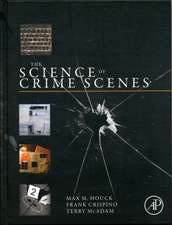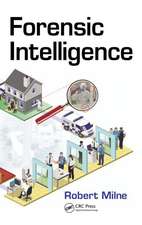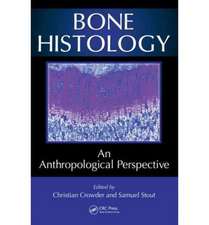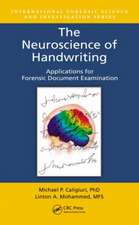The Routledge Handbook of Archaeological Human Remains and Legislation: An international guide to laws and practice in the excavation and treatment of archaeological human remains
Editat de Nicholas Marquez-Grant, Linda Fibigeren Limba Engleză Paperback – 25 mar 2013
More specifically, the volume discusses the following:
- What is the current situation (including a brief history) of physical anthropology in the country?
- What happens on discovering human remains (who is notified, etc.)?
- What is the current legislation regarding the excavation of archaeological human skeletal remains? Is a license needed to excavate human remains? Is there any specific legislation regarding excavation in churchyards? Any specific legislation regarding war graves?
- Are physical anthropologists involved in the excavation process?
- Where is the cut-off point between forensic and archaeological human remains (e.g. 100 years, 50 years, 25 years…)?
- Can human remains be transported abroad for research purposes?
- What methods of anthropological analysis are mostly used in the country? Are there any methods created in that country which are population-specific?
- Are there particular ethical issues that need to be considered when excavating human remains, such as religious groups or tribal groups?
The entries are contained by an introductory chapter by the editors which establish the objectives and structure of the book, setting it within a wider archaeological framework, and a conclusion which explores the current European and world-wide trends and perspectives in the study of archaeological human remains. The Routledge Handbook of Archaeological Human Remains and Legislation makes a timely, much-needed contribution to the field of physical anthropology and is unique as it combines information on the excavation of human remains and the legislation that guides it, alongside information on the current state of physical anthropology across several continents. It is an indispensible tool for archaeologists involved in the excavation of human remains around the world.
| Toate formatele și edițiile | Preț | Express |
|---|---|---|
| Paperback (1) | 449.01 lei 3-5 săpt. | +57.16 lei 7-13 zile |
| Taylor & Francis – 25 mar 2013 | 449.01 lei 3-5 săpt. | +57.16 lei 7-13 zile |
| Hardback (1) | 1256.93 lei 6-8 săpt. | |
| Taylor & Francis – 21 mar 2011 | 1256.93 lei 6-8 săpt. |
Preț: 449.01 lei
Preț vechi: 488.05 lei
-8% Nou
Puncte Express: 674
Preț estimativ în valută:
85.92€ • 90.03$ • 71.03£
85.92€ • 90.03$ • 71.03£
Carte disponibilă
Livrare economică 21 martie-04 aprilie
Livrare express 07-13 martie pentru 67.15 lei
Preluare comenzi: 021 569.72.76
Specificații
ISBN-13: 9780415859400
ISBN-10: 0415859409
Pagini: 800
Ilustrații: 25 tables
Dimensiuni: 174 x 246 x 46 mm
Greutate: 1.48 kg
Ediția:1
Editura: Taylor & Francis
Colecția Routledge
Locul publicării:Oxford, United Kingdom
ISBN-10: 0415859409
Pagini: 800
Ilustrații: 25 tables
Dimensiuni: 174 x 246 x 46 mm
Greutate: 1.48 kg
Ediția:1
Editura: Taylor & Francis
Colecția Routledge
Locul publicării:Oxford, United Kingdom
Cuprins
Part 1: Introduction Part 2: Europe Part 3: Rest of the World, Africa, North America, South America, Antarctica, Asia, Oceania Part 4:Conclusion Appendix
Recenzii
'This will be an incredibly useful source of information for scholars around the world who are, or may be hoping to be, working with human remains from archaeological contexts in particular places across the globe. It will, furthermore, save much time searching for relevant information to help their work, and provide much needed contacts ... an essential reference text for students working on archaeological human remains.' - Charlotte Roberts, Durham University, UK
Notă biografică
Dr Nicholas Márquez-Grant is a Forensic Anthropologist and Archaeologist at Cellmark Forensic Services, Abingdon (UK) and a Research Associate at the Institute of Human Sciences, School of Anthropology and Museum Ethnography, University of Oxford. He has done considerable work on human skeletal remains from archaeological contexts ranging from the Neolithic to the 19th century and from a number of countries. He is also regularly involved in forensic work in the UK. He has taught biological anthropology since 2001 at the University of Oxford.
Dr Linda Fibiger is a physical anthropologist whose research interests include interpersonal violence and conflict in prehistoric Europe, Irish Early Christian Burials, and standards and practice in osteoarchaeology. She has published widely on commercial and research projects in Britain and Ireland, and is currently involved in a research project at the University of Cardiff on changing patterns of living in the earliest agricultural societies of central Europe.
Dr Linda Fibiger is a physical anthropologist whose research interests include interpersonal violence and conflict in prehistoric Europe, Irish Early Christian Burials, and standards and practice in osteoarchaeology. She has published widely on commercial and research projects in Britain and Ireland, and is currently involved in a research project at the University of Cardiff on changing patterns of living in the earliest agricultural societies of central Europe.
Descriere
The Routledge Handbook of Archaeological Human Remains and Legislation is unique as it combines information on the excavation of human remains and the legislation that guides it, alongside information on the current state of physical anthropology across several continents. It is an indispensible tool for archaeologists involved in the excavation of human remains around the world.














